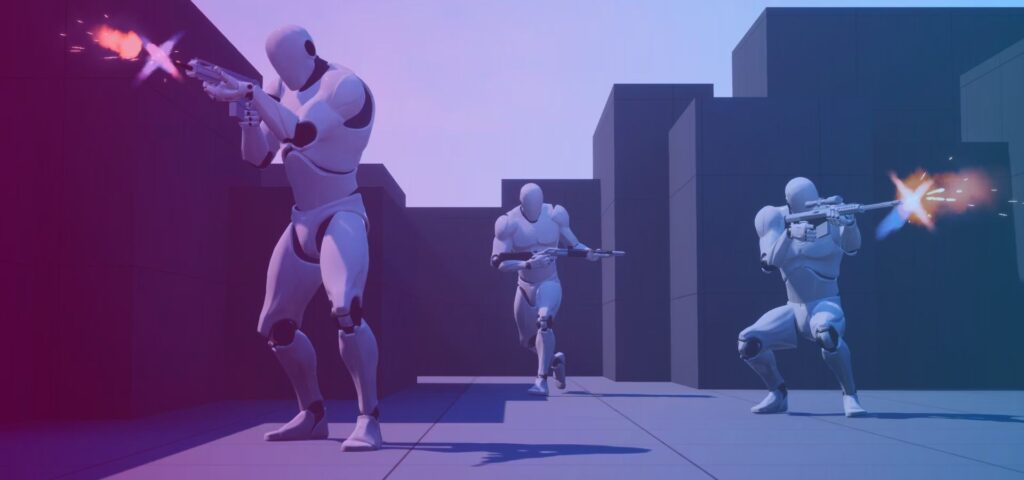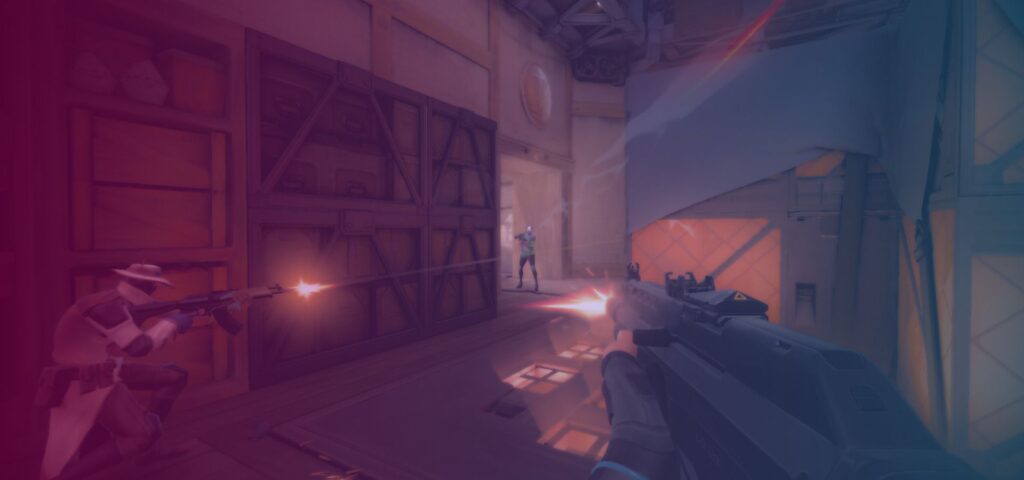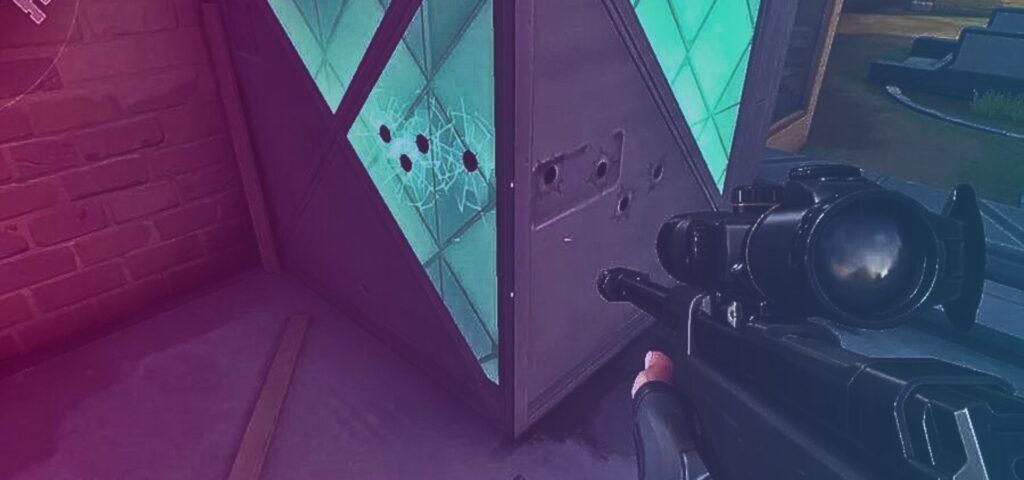Unreal Engine has become a cornerstone in the realm of game development, especially within the dynamic gaming landscape we navigate today. Recognizing the profound significance of improving your first-person shooter (FPS) game, particularly when harnessing the potential of the Unreal Engine, is paramount. FPS games, known for their immersive gameplay, have firmly established themselves as a highly sought-after and intensely competitive genre. They attract players across all skill levels, ranging from casual enthusiasts seeking thrilling experiences to professional esports competitors relentlessly pursuing victory.
The quest to enhance your FPS game, especially when powered by Unreal Engine, transcends the creation of mere diversions; it’s about sculpting a world that captivates players, beckoning them to return time and again for more adrenaline-fueled action. As we delve into the importance of enhancing your Unreal Engine FPS game, it becomes evident that the player experience lies at its core. Successful FPS games are those that transport players into captivating worlds, where each action, each shot, and each choice carries weight. By continually refining and enhancing the Unreal Engine gaming experience, developers can instill a sense of achievement, mastery, and immersion that keeps players engrossed and eager for more.
In a saturated market where new titles emerge regularly, standing out is a formidable challenge. Players are spoilt for choice, making it crucial for your Unreal Engine FPS game to provide a unique and enthralling experience. Integrating innovative game mechanics, especially when harnessed through the power of the Unreal Engine, can serve as the defining factor that distinguishes your game from the rest. Not only does it attract players, but it also nurtures a devoted community of gamers who champion your creation, transforming it into a beloved addition to the Unreal Engine FPS genre.
The burgeoning world of esports has thrust Unreal Engine FPS gaming into the spotlight of competitive play. For developers eyeing a spot in this fiercely competitive scene, delivering a polished, balanced, and thrilling Unreal Engine gaming experience is non-negotiable. Professional players and teams seek out games that offer depth, a high skill ceiling, and strategic complexity. By enhancing your Unreal Engine FPS game with advanced mechanics, you not only beckon esports talent but also cultivate a title that can be embraced by the competitive gaming community. This opens doors to tournaments, sponsorships, and a global audience eager for high-stakes Unreal Engine FPS action.
Table of Contents
Here are 5 game mechanics that can elevate your FPS game among Gaming enthusiasts.
1. Make A Bounce Pad

Integrating this game mechanic into your FPS game using Unreal Engine can bring about several significant improvements that enhance the overall player experience. This dynamic addition introduces a unique and exhilarating dimension to your Unreal Engine-powered FPS game, allowing players to interact with the environment in novel ways. Let’s delve into how integrating bounce pads can elevate your Unreal Engine FPS game and explore the key aspects and implementation steps to make the most of this exciting feature.
First and foremost, bounce pads inject an element of unpredictability and excitement into your Unreal Engine FPS game. Players can use them strategically to gain the upper hand during intense firefights or to reach elevated positions for a tactical advantage. This aspect alone adds an extra layer of depth to your Unreal Engine game, promoting creativity and improvisation among players as they harness the bounce pad’s potential. Furthermore, bounce pads contribute to the immersive nature of your Unreal Engine FPS game. As players bounce off walls and objects, they feel a heightened sense of freedom and agency within the game world.
This heightened level of interaction fosters a more engaging and memorable gaming experience, drawing players deeper into the virtual battlefield. It’s a visual spectacle that not only captivates players but also keeps them coming back for more. In terms of implementation within Unreal Engine, creating an effective bounce pad involves careful consideration of Unreal Engine’s physics and game design principles. Fine-tuning the physics behind the bounce pad is crucial to provide players with consistent and satisfying results in Unreal Engine. The force and direction of the bounce, along with the visual and audio cues, need to be finely balanced to ensure that the mechanic is both enjoyable and fair in Unreal Engine.
The placement of bounce pads within your Unreal Engine game world also plays a pivotal role. Strategic placement can open up exciting opportunities for players to outmaneuver opponents, traverse the map efficiently, or execute surprise attacks within Unreal Engine. On the other hand, haphazard placement can lead to frustrating or disruptive experiences. Balancing the mechanics within your Unreal Engine game is essential to prevent it from becoming overpowered and to maintain a competitive and enjoyable environment for all players.
2. Integrate FPS Scope Creator

Integrating an FPS Scope Creator into your FPS game developed using Unreal Engine can be a game-changer, significantly enhancing the player experience and elevating your Unreal Engine-powered game to new heights. This mechanic, tailored for Unreal Engine, allows players to customize their weapon scopes, offering a deeper level of immersion and personalization within the Unreal Engine environment. Whether players prefer a classic crosshair or a futuristic holographic sight, the choice is in their hands, enhancing the feeling of stepping into the shoes of their in-game character and making each playthrough feel uniquely their own within the Unreal Engine ecosystem.
One of the key aspects of the FPS Scope Creator, designed for Unreal Engine, is player empowerment. It lets gamers fine-tune their scopes to match their playstyle within the Unreal Engine framework, whether it’s long-range precision with a high zoom level or close-quarters combat with a wider field of view. This customization grants each player a sense of control over their in-game equipment within the Unreal Engine environment, leading to a more satisfying and competitive gaming experience. Beyond reticle style and zoom level, the Unreal Engine-compatible scope creator offers an array of customization options. Players can often adjust the color, opacity, and other visual elements of their scopes, allowing for a truly personalized look within the Unreal Engine development environment.
Moreover, advanced scope creators may incorporate realistic features like lens distortion or parallax, replicating the behavior of actual scopes within the Unreal Engine framework. This level of detail not only enhances aesthetics but also contributes to the overall authenticity of the gameplay within Unreal Engine-powered games. In multiplayer FPS games developed using Unreal Engine, having a customized scope can be a strategic advantage. Players can adapt their scopes to various situations and playstyles, giving them the upper hand in intense battles within the ecosystem. A well-implemented Unreal Engine-compatible FPS Scope Creator attracts competitive gamers and esports enthusiasts who value the edge that personalization can provide.
This can lead to a more active and engaged player base, fostering a thriving gaming community around your Unreal Engine FPS title. To integrate an Unreal Engine-compatible FPS Scope Creator into your game effectively, focus on user-friendly interfaces, responsive controls, and a diverse range of reticle styles and customization options tailored to the platform. The mechanic should seamlessly fit into your game’s overall design and be accessible to players of all skill levels, maximizing the Unreal Engine’s potential for player immersion and empowerment. By prioritizing these aspects and leveraging its capabilities, you can create a more engaging and competitive FPS experience that stands out in the gaming industry.
3. Apply TPS-FPS Character System v2

The TPS-FPS Character System v2 in your FPS game, is a game-changer that can significantly enhance the player experience and elevate your game to a professional level. This advanced character system offers a multitude of benefits, including realistic character animations, network compatibility for multiplayer modes, and a high degree of modularity and scalability, all tailored specifically for Unreal Engine developers. The character animations provided by the TPS-FPS Character System v2 within Unreal Engine are incredibly lifelike and responsive. When players interact with the game world, whether it’s running, jumping, or engaging in combat, the characters move and react with stunning realism.
These realistic animations not only immerse players more deeply into the game but also improve gameplay by ensuring that character movements are intuitive and visually pleasing. Additionally, the system’s network compatibility is a crucial aspect, especially in today’s gaming landscape. With multiplayer modes becoming increasingly popular in Unreal Engine-based games, seamless synchronization of character actions across all players’ screens is essential. The TPS-FPS Character System v2 handles this with finesse, guaranteeing that all players within Unreal Engine experience a fair and consistent game environment. This is vital for competitive gaming and can significantly enhance the overall multiplayer experience.
The modularity and scalability of this system within Unreal Engine provide developers with the freedom to adapt and expand their game over time. As your Unreal Engine-based game evolves and grows, you can easily integrate new character types, abilities, and customization options without having to overhaul the entire character system. This adaptability not only saves development time but also allows your Unreal Engine game to stay relevant and competitive in the ever-changing gaming industry.
To integrate the TPS-FPS Character System v2 effectively within Unreal Engine, you’ll want to start by thoroughly understanding the system’s documentation and guidelines tailored for it. Familiarize yourself with the available features and customization options within the environment and plan how they align with your game’s vision. Work closely with your development team within Unreal Engine to ensure seamless integration, testing the system extensively to iron out any bugs or issues. Ultimately, by leveraging the power of this character system, you can create a more immersive, responsive, and dynamic FPS game that players will enjoy for years to come.
4. Add Camera Shakes

Integrating camera shake into your FPS game using it can be a game-changer, significantly enhancing the overall player experience. This dynamic mechanic bridges the gap between the virtual world and reality by replicating the physical sensations a character might experience in high-stress situations, such as firing a high-caliber weapon or surviving an explosive blast. Players feel as though they’re right in the midst of the action, intensifying their engagement and investment in your game.
Camera shake excels at elevating moments of impact, adding a visceral layer of feedback. Whether it’s the recoil of a sniper rifle shot or the shockwave of an explosion, It’s camera shake makes these moments feel substantial and satisfying. Players not only witness but genuinely feel the consequences of their actions, intensifying the gameplay experience.
One crucial aspect of integrating camera shake is offering players control over its intensity. It provides a range of intensity options, ensuring that every player can enjoy the game according to their comfort level. Implementing a camera shake in it is a well-documented process. Begin by creating a CameraShake asset and customize its parameters, such as intensity and duration. Then, associate the CameraShake asset with specific in-game events or actions, such as weapon firing or explosions. Utilize Unreal Engine’s Blueprint system to trigger camera shakes based on in-game events and conditions, offering precise control.
Further, fine-tune camera shake parameters in real-time through Blueprint scripting. This dynamic control ensures that the camera shake aligns perfectly with the gameplay’s pacing and intensity. Implementing a camera shake in it is a seamless process, enabling developers to leverage this powerful mechanic to elevate their FPS games. Regular playtesting and player feedback refine the camera shake, striking the perfect balance between realism and player comfort. Embrace Unreal Engine’s camera shake as a tool to transport players into the heart of the action, making your FPS game a thrilling and unforgettable adventure.
5. Create Bullet Holes

This dynamic feature adds authenticity and interactivity to your game world, making it feel more realistic and engaging. Here’s how integrating this can enhance your FPS game, along with the key aspects to consider when implementing it, including the process of doing it in Unreal Engine. To integrate this mechanic in Unreal Engine, you’ll need to follow a structured process. Firstly, Unreal Engine offers a robust material system that allows you to define how surfaces react to impacts. Create material instances for different surfaces, such as wood, metal, and concrete, and assign appropriate textures and properties to each. Utilize normal maps and displacement maps to achieve realistic bullet hole effects.
Implement a system to track the type of bullets fired by the player’s weapons. You can use game variables or attributes to differentiate between bullet types. Ensure that the ballistic properties of each bullet type are accurately represented in your game’s physics engine. This adds depth and strategy to your gameplay, as players must choose their weapons wisely based on their properties. It provides collision detection and response mechanisms that allow you to determine the impact angle of bullets on surfaces. Utilize ray tracing or collision channels to calculate the angle and adjust the appearance of bullet holes accordingly.
This attention to detail enhances the realism of your game, making the world react to shots in a way that mirrors reality. Lastly, leverage it’s particle system to create dynamic particle effects upon bullet impact. These effects, such as dust, sparks, or debris, enhance the visual feedback to players, making the interaction more immersive. Additionally, use Unreal’s audio features to synchronize sound effects with the bullet impact visuals, further enhancing the player experience.
When successfully implemented in Unreal Engine, the “Create Bullet Holes” mechanic enriches your FPS game, making it more captivating, strategic, and true to life. Players will appreciate the attention to detail, and their engagement in the game world will be heightened as they witness the realistic consequences of their every shot. This process, when done meticulously, ensures that your game achieves a professional level of realism and immersion that sets it apart from the competition.




